If you’ve got bad knees, you’re not alone: one in four Americans have chronic knee pain.
One common cause of those creaky, achy joints? Arthritis.
The good news is that certain types of low-impact exercise (like bicycling) can help, especially for knee osteoarthritis patients.
Low-impact exercises are going to be your new best friend if you’ve got a bum knee(s). Cycling is one of the best low-impact exercises because of the cardio benefits, and it’s one of the more enjoyable variations of exercise.
An electric bicycle can be especially beneficial because the electric motor helps you pedal, allowing you to control how hard and how often you have to push — and how much stress you put on your knees as a result.
If you’re having knee problems, your second best friend is an electric bicycle. The importance of having the ability to adjust how much pressure and strain you’re putting on your knees mid-exercise cannot be understated.
Below, we explain why cycling — especially with an e-bike — is a great type of exercise for arthritis patients. We also reveal what people with knee arthritis should look for when picking out a bike.
Is Bike Riding Good for Arthritic Knees?
Cycling is a low-impact exercise, meaning it doesn’t put a lot of pressure on the knees. This can help you avoid knee pain.
Compare cycling to jogging, for example: When you run, your knees absorb the shock every time your foot hits the ground. On the other hand, pedaling a bike allows for a smooth motion without the shock of hitting the ground.
Additionally, cycling requires your leg to go through a full range of motion, which can help strengthen muscles around the kneecap (like the quadriceps and calves).
Stronger leg muscles help carry your lower body, alleviating your joints of the burden.
Plus, cycling can help you burn calories and manage your weight. Being overweight can worsen your arthritis because it places more pressure on joints. In fact, 10 pounds of extra weight can result in an extra 15 to 50 pounds of pressure on your knees.
The Impact of Cardio
There’s no better exercise for weight loss than cardio. But, as we just said, walks and runs can be problematic if you have bad knees. So, that leaves biking as one of the only options left if you need cardio but have bad knees.
Aside from being one of the best exercises for your knees, cycling has other health benefits, like promoting good cardiovascular health. It’s an aerobic exercise that can help build a healthier heart, blood vessels, and lungs, reducing the risk of cardiovascular disease and related issues.
If your heart rate is up and you’re out of breath, you’re doing it right, and your heart is certainly thanking you. Just like how cardio is the best exercise for weight loss, it’s also the best for heart health. The more blood you can get circulating in your system, the better, and nothing gets the blood pumping quite like cardio.
Is Cycling Good for Cardio?
Last but not least, cycling is a great exercise because it’s so versatile. You can start by using a recumbent bike, for example, which places less pressure on the knees. Then, you can transition to an upright bike. And cyclists can use indoor stationary bikes at home on rainy days.
Speaking of, isn’t it the worst feeling when it’s a sunny day and you feel like you’ve got nothing to do? Biking is also unique because it affords you an opportunity to get all of your exercise done outdoors — which recumbent exercise bikes just can’t quite do.
This is also important for mental health. Time spent outdoors helps reduce stress, increase mood, and boost the attention span. The sense of accomplishment and satisfaction after completing a long outdoor bike ride is truly one of the best feelings out there — yet another reason you should start biking for your primary cardio method.
Cycling is adaptable in other ways, too. You can cycle uphill for an intense workout or enjoy a leisurely ride on a flat surface for a more low-key session.
Few workouts offer this type of versatility, and there certainly isn’t a lot you could call “fun.” Biking is that rare exception.
Electric bikes, in particular, are helpful in adapting cycling workouts to your needs and wants. We’ll explain further in the next section.
What Is the Best Bike for Bad Knees?
Electric bicycles are particularly helpful for people who struggle with joint pain due to bad knees. That’s because e-bikes are equipped with a pedal assist system (PAS).
When pedal assist is activated, the e-bike motor helps move the bike forward. As a result, you don’t have to pedal as hard — alleviating pressure on your knees.
Depending on your knee situation, the motor is also a big help if anything goes wrong. Bad knees can be unpredictable, and if they start flaring up in the middle of a ride, what are you going to do?
If you’re on an electric bike, you’re probably golden! It’ll get you home safe and sound. Even if the situation isn’t bad enough to the point where you have to end your ride, the pedal assist takes care of the horsepower for you, moving you toward your destination without you needing to pedal.
Walk assist is another handy feature of e-bikes that can be helpful if you have bad knees. When the bike is in walk mode, the motor gently powers the bicycle forward while you walk alongside it. This avoids the stress of pushing the bike.
The e-bike motor can help make cycling more comfortable overall. This increases the odds that you’ll feel motivated to get on your bike in the first place.
After all, isn’t the whole point of investing in a bike that you use it?
8 Things To Consider When Choosing an Electric Bike
An electric bike can be a great tool for managing your arthritis. That said, not all e-bikes are created equal.
It’s essential that you look for what fits your needs. From the most important factors such as size and model to the more trivial ones like color and accessories, your electric bike should be a reflection of yourself: fun, cool, useful, and all-around dope.
Here’s what to look for when purchasing an e-bike:
Bike Size
Look for bikes with different frames for different heights. An appropriately-sized bike with the saddle at a comfortable height will be easier to get on and off. It can also help encourage a healthy cycling posture, allowing you to avoid issues like back pain.
For example, the Velotric Discover 1 and Nomad 1 come in two sizes: The Step-Through (Step-Thru) models are ideal for rider heights 5 feet, 1 inch to 6 feet, 4 inches, while the High-Step models are ideal for rider heights 5 feet, 4 inches to 6 feet, 9 inches.
Accessible Riding Modes
Pedal assist is a great feature for people with arthritis. It allows you to control exactly how much effort you have to put into pedaling. You can ramp up the pedal assist and reduce pressure on knee joints when necessary.
Both the Velotric Discover 1 and Velotric Nomad 1 come with five levels of pedal assist and a user-friendly walk mode, making it easy to push the bike along when not riding.
Multi-Speed Levels for Improved Bike Control
A bike with speed adjustment gives you greater control over your ride, allowing you to adjust your pace to your comfort level. Beginner readers may prefer to keep a slower pace, for example.
Different bikes come with different speed levels for various riders’ needs. For example, Velotric’s Discover 1 has Shimano 7-speed capability, while the Nomad 1 has Shimano 8-speed capability.
Motor Power
Electric bikes have different motor powers. It’s good to have an e-bike with the capacity to help you in tough spots, like going uphill, so you don’t have to pedal as much — alleviating stress on your knees.
Look for bikes with at least 500 watts of power, like the 500W Discover 1. Want more oomph to your ride? Check out the Nomad 1, which has 750 watts of power.
Long Battery Life
E-bike range refers to how long the bike battery lasts after one charge. A long battery life means you won’t have to recharge as often.
For example, the Velotric Discover 1 has a range of up to 60 miles, while the Velotric Nomad 1 has a range of up to 55 miles. Both bikes only take six hours to charge fully.
Plus, their batteries are UL 2271-certified. This is an optional safety certification issued by the global safety agency Underwriters Laboratories for lithium-ion batteries and is one of the more stringent safety certifications for batteries in the industry. Few other ebike batteries are UL-certified due to the increased costs needed to ensure the quality of the battery and for testing.
Since the battery is a core part of an e-bike’s functionality and reliability throughout the years, it’s certainly well worth looking into which manufacturers actually invest in this component to indicate the quality of the bike and how long it will last.
Tire Size
Slimmer tires are more popular for city riding, while fatter tires are better for rough terrains. People with arthritis would likely prefer fat tires, which allow for a smoother ride even on bumpy areas.
Think about where you live. Are you in the middle of a city? The woods? Suburbia? Everything is a factor, such as weather, roads, bike lane accessibility, etc. Be sure to do all of your research before you decide what kind of tires to get.
Both the Discover 1 and Nomad 1 will have fatter tires compared to a traditional road bike, with the Discover 1 coming in at 2.5” wide, while the Nomad comes with 4” wide wheels. Traditional cyclists may prefer slimmer wheels for their lightweightedness, but for someone considering an e-bike, it’ll be less of a concern since you can simply power through with your motor!
Pro tip: If you prefer off-road two-wheeling, the Nomad 1 has the fat tires you’ll need for a comfortable ride.
Ergonomic Design
Ergonomic design helps promote a good bike fit. For example, the pedals shouldn’t be too far down, or you can strain your knees. Similarly, the handlebars should be positioned to encourage good posture, avoiding back pain. A natural, upright position decreases the strain on the lower back — the seat positioning is critical here!
You can rely on Velotric bikes for a stress-free ride that makes your comfort a priority. A cushioned, comfortable seat, optimized handlebars, and a step-through frame make for an easy ride.
Plus, each of our bike models comes with two frame sizes tailored to different heights. The Step-Thru fits rider heights from 5 feet, 1 inch to 6 feet, 4 inches, while the High-Step model fits rider heights from 5 feet, 4 inches to 6 feet, 9 inches.
Safety Features
Safety is paramount when cycling. Ensure any bike you buy has protective features, like rear brake lights and hydraulic disc brakes. Also, check that the bike is suitable for riding in the rain.
As we mentioned before, the bike itself is almost a safety feature. If your knees start acting up, your bike can help ensure you get home okay.
Velotric bikes and batteries are certified by the global safety science organization Underwriters Laboratories. They also come equipped with hydraulic disc brakes and integrated rear lights and are IPX6-grade waterproof.
5 Tips for Biking With Arthritic Knees
It’s important to keep a few things in mind before hopping on your e-bike and cycling into the sunset.
Follow these best practices for riding an electric bicycle if you have bad knees:
Invest in your cycling gear. For your safety, wear a helmet, eye protection, biking gloves, and bright clothing. Also, wear comfortable, form-fitting cycling clothes (so they don’t get caught in the pedals).
Warm up. Never start a ride until you’ve warmed up. Do some light stretching and move your joints. Range-of-motion exercises that focus on your knees are a great starting point.
Start small. If you’re new to cycling, begin with shorter rides. Aim for five to 10 minutes at a low resistance level (increase the pedal assist so you don’t have to work as hard). Increase the length and intensity (decreasing the pedal assist) of each ride over time.
Stretch every day. Always stretch before and after every ride. This helps improve your mobility and range of motion. These stretches for bike riders are a good reference.
Stop if you feel pain. Take a break if something hurts. You may need to adjust your bike seat or cycling stance. If the pain continues, seek professional help. You don’t want to risk a more serious injury.
Discover Why Velotric e-Bikes Are the Top Choice for Arthritic Knees
If you’re looking for the best exercise bike that ticks all the boxes above, check out the Velotric bike shop. Our recommendations for people seeking the right bike to help with knee pain? The Discover 1 or Nomad 1. Both models have helpful features like pedal assist and walk mode.
The Discover 1 has thick 2.5” tires, making it an incredible cruiser bike for comfortable city riding, while the Nomad 1 has 4” wide fat tires, making it more suitable for all terrains, including the weekend off-road ride.
Both the Discover 1 and Nomad 1 offer a choice of frame sizes to suit different heights. The Step-Thru model is ideal for rider heights 5 feet, 1 inch to 6 feet, 4 inches, while the High-Step model is ideal for rider heights 5 feet, 4 inches to 6 feet, 9 inches.
Ready to give cycling a try? Book a test ride now.
Sources:
8 Best Stretches for Cycling | Verywell Family
One In Four Adults Suffers From Chronic Knee Pain. | ACL Administration for Community Living
Cycling: A low-impact exercise that helps the heart | Harvard Health























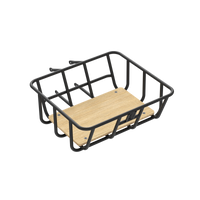
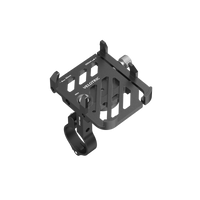
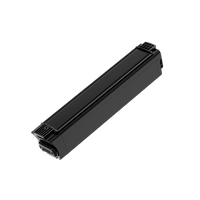
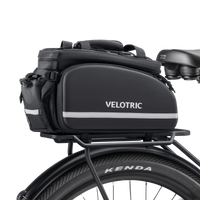

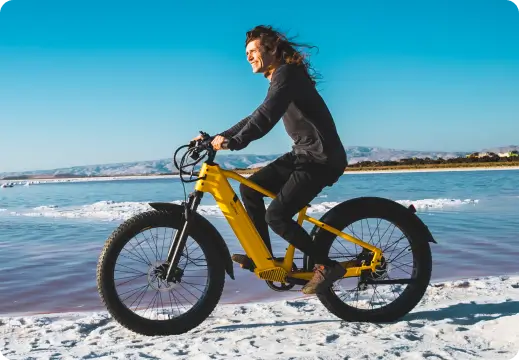
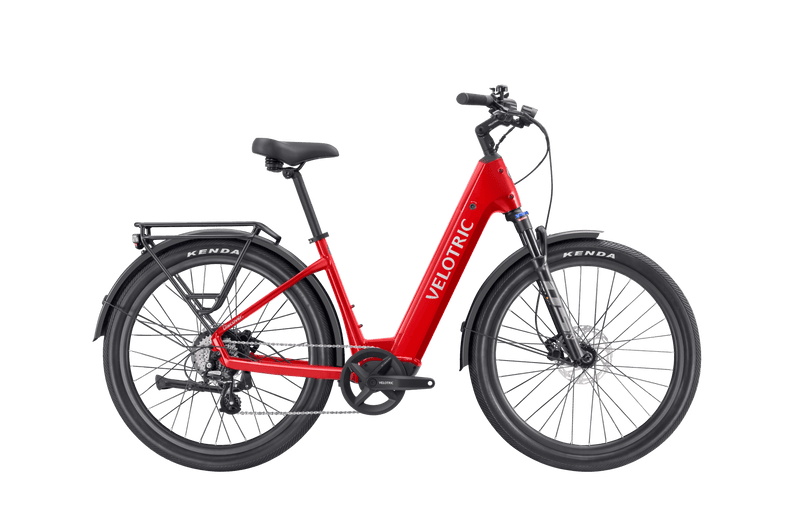
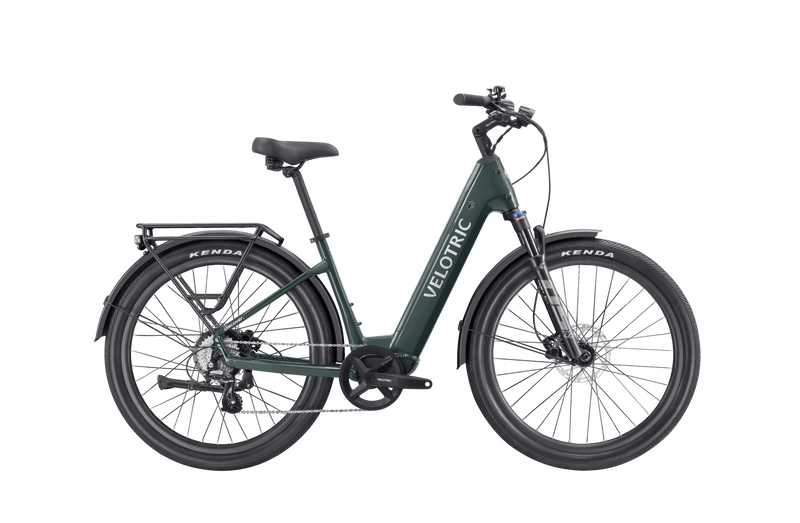
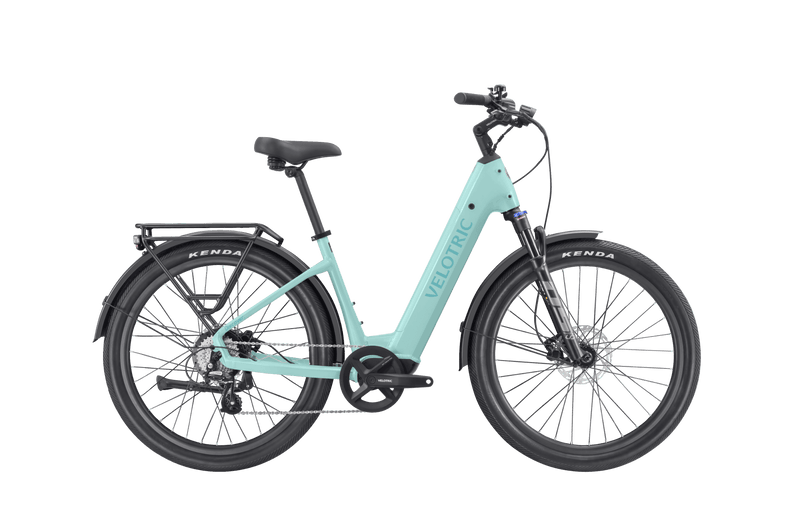
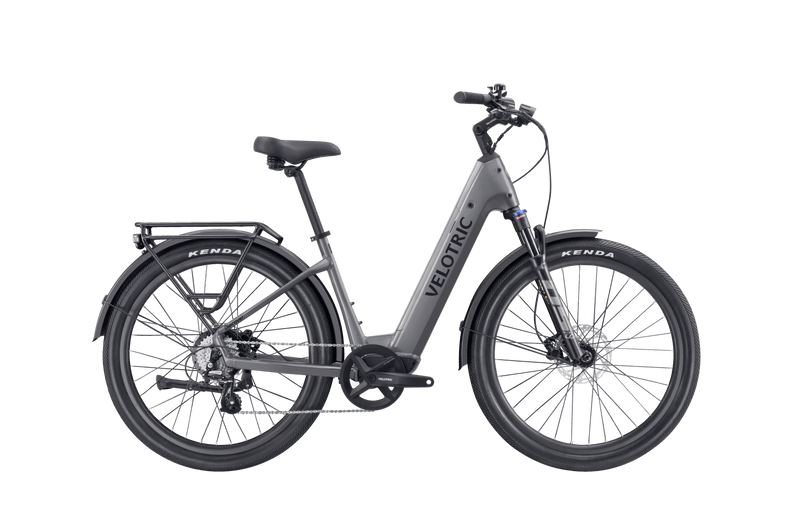
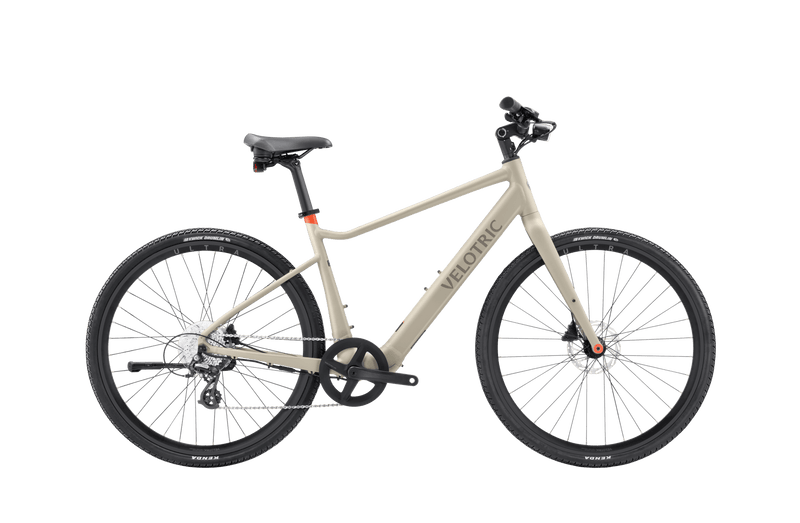
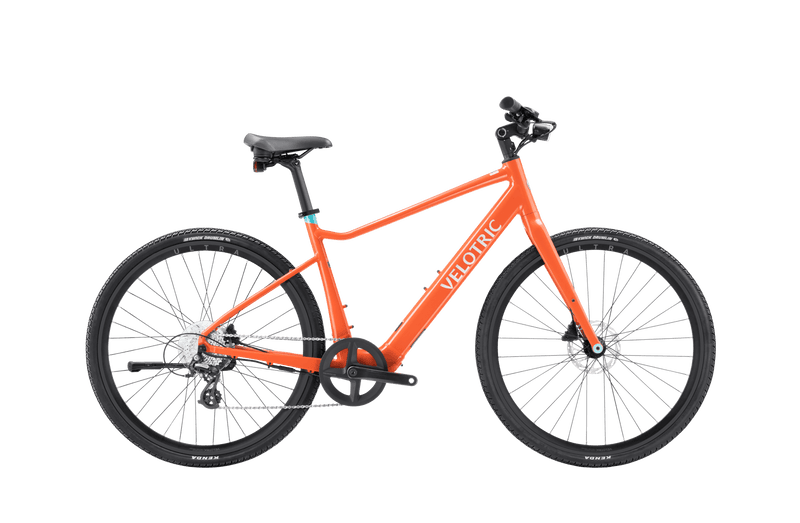
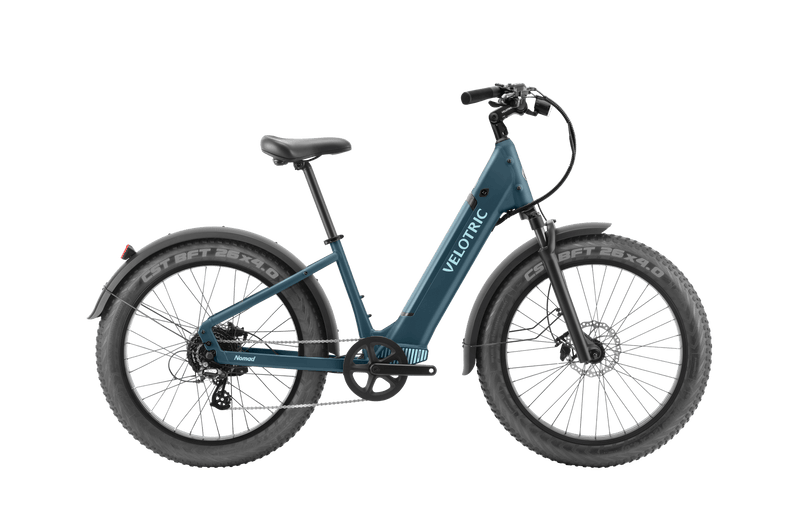
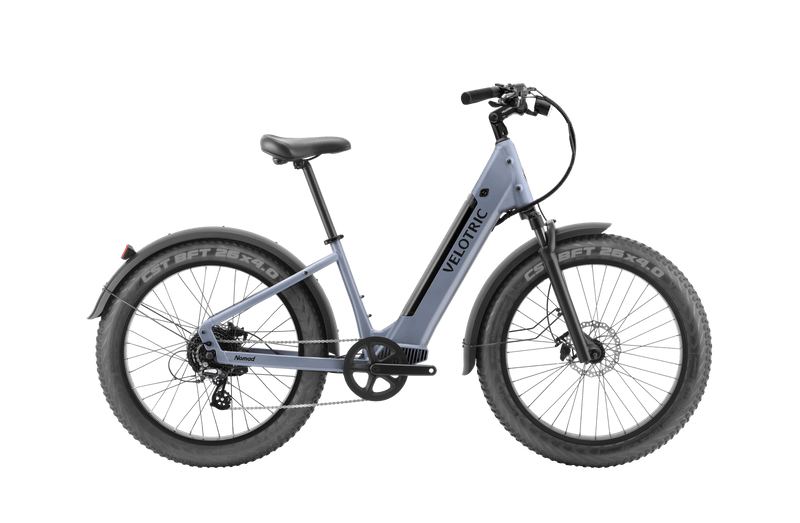
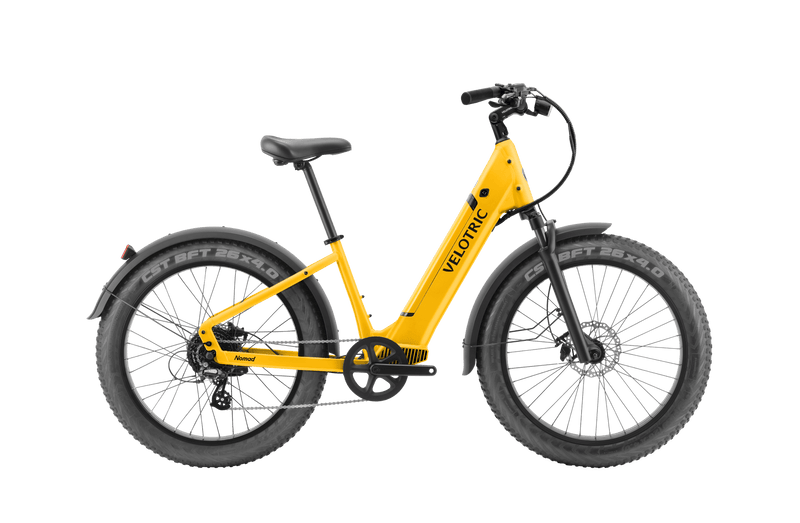
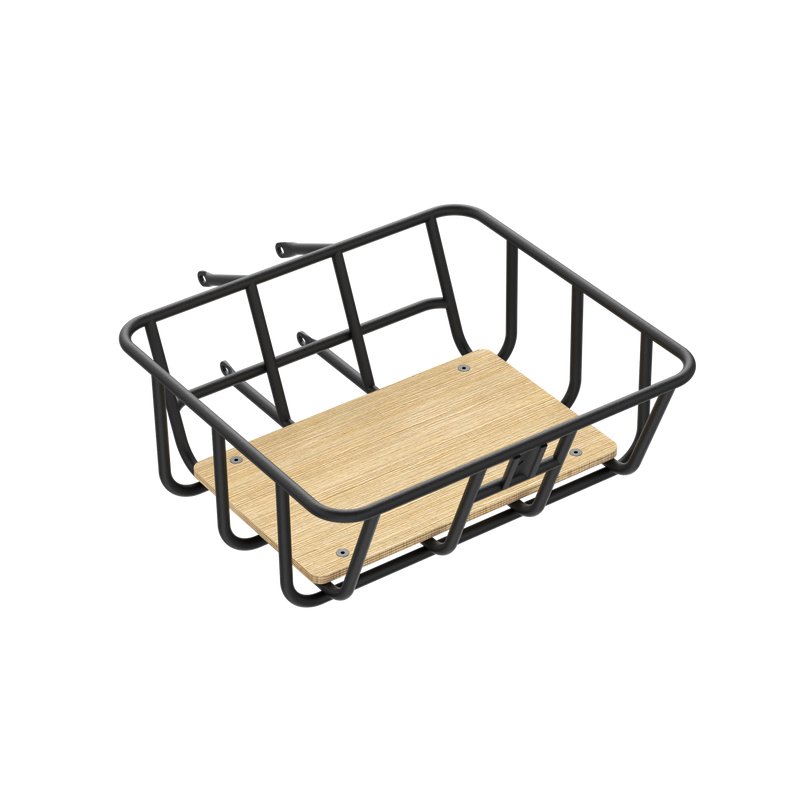
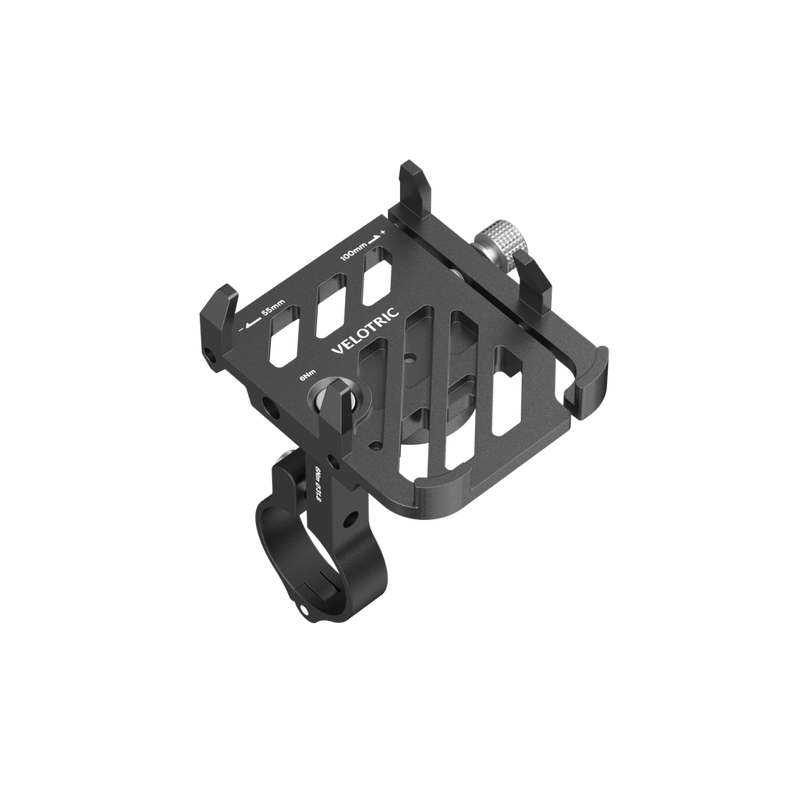
1 comment
Your description about selecting a bike for people with knee problems gave me a good insight in choosing an e bike.- Velotric e Bike